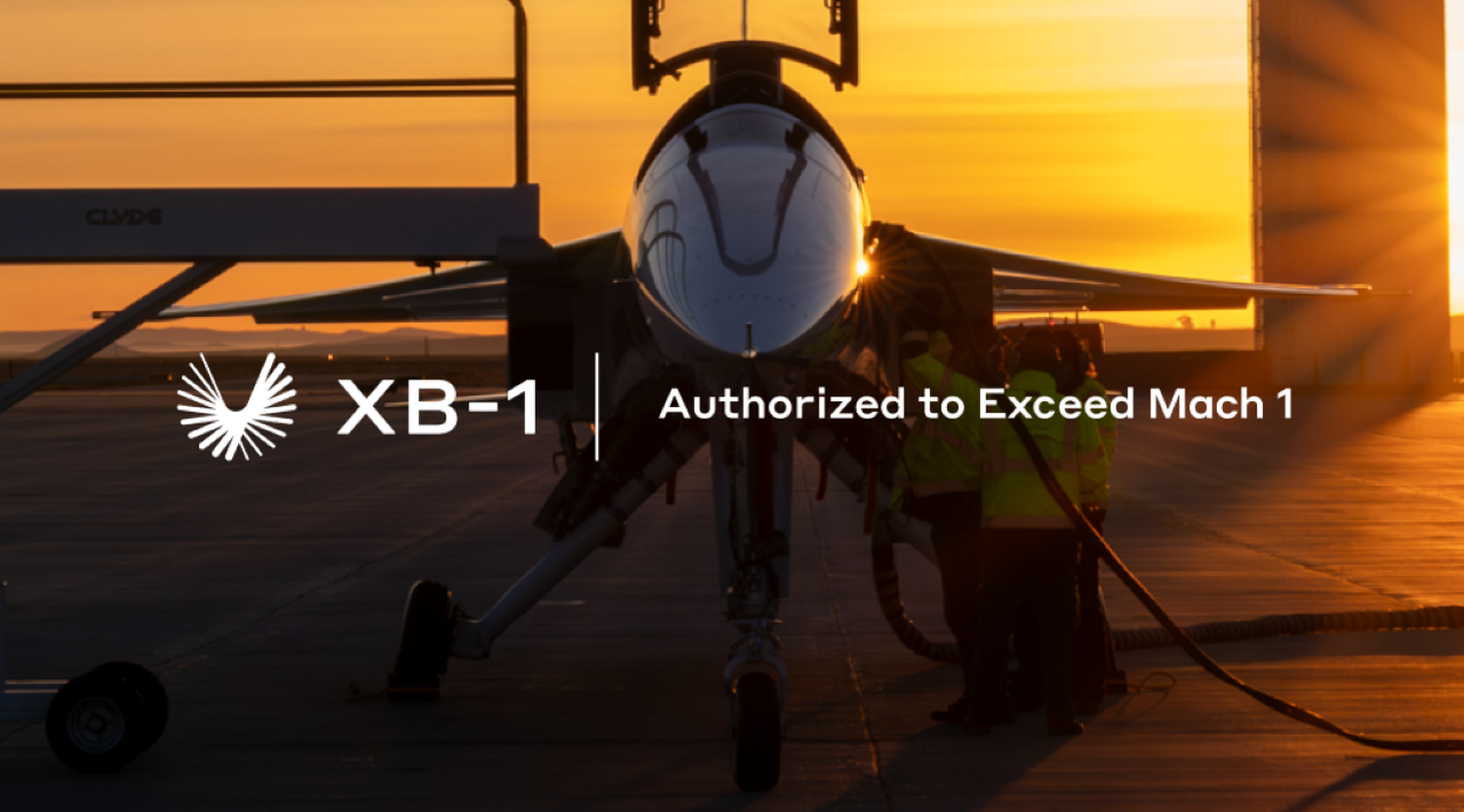The Federal Aviation Administration (FAA) has granted Boom Supersonic‘s XB-1 a special authorization to exceed Mach 1, shortly after the jet’s inaugural flight on March 22, 2024, at the Mojave Air & Space Port in California. The authorization allows XB-1 to perform supersonic test flights later this year in the Black Mountain Supersonic Corridor in Mojave, CA.
The jet’s test flights will occur in the R-2508 Complex and will extend into the High Altitude Supersonic Corridor within the R-2515 airspace, areas used extensively for research and military aeronautical operations.
The FAA’s Special Flight Authorization (SFA) was granted following a thorough Environmental Assessment, also extending to chase plane aircraft that will monitor the XB-1 during its supersonic endeavors.

Boom Supersonic’s founder and CEO Blake Scholl expressed gratitude towards the FAA for its innovation support, emphasizing the XB-1’s crucial role in shaping the future of supersonic travel. “Following XB-1’s successful first flight, I’m looking forward to its historic first supersonic flight,” said Scholl.
The test program includes an extensive schedule designed to expand the jet’s flight envelope through and beyond Mach 1, involving 10 to 20 flights. The flights aim to confirm performance and handling qualities, including in-flight checks of all systems and multiple test points demonstrating safe margins to flutter (vibration) boundaries.
Test Pilot Tristan “Geppetto” Brandenburg, who previously monitored XB-1’s initial flight in a Northrop T-38 chase aircraft, will pilot XB-1 in its first supersonic flight. Brandenburg, a seasoned pilot with over 2,500 flight hours in 30 different aircraft, highlighted the significance of the flights.

“Being in the air with XB-1 during its maiden flight is a moment I will never forget. The team has worked hard to reach this point, and seeing today’s flight through to mission completion is a huge accomplishment for all of us”, he said.
New era: Boom Supersonic makes the first successful flight of the XB-1 demonstrator
Upcoming tests for the XB-1 include retraction and extension of the landing gear, evaluating the sideslip and angle of attack, and employing the dampers or stability augmentation system for the first time. The subsequent flights will assess XB-1’s flutter excitation system, crucial for ensuring stability at high speeds.
The Mojave Air & Space Port, adjacent to the vast R-2508 Complex, provides an ideal location for these groundbreaking tests. This area has a rich history of aerospace achievements, including the first breaking of the sound barrier in 1947 and numerous other speed and altitude records.


Comentarios
Para comentar, debés estar registrado
Por favor, iniciá sesión